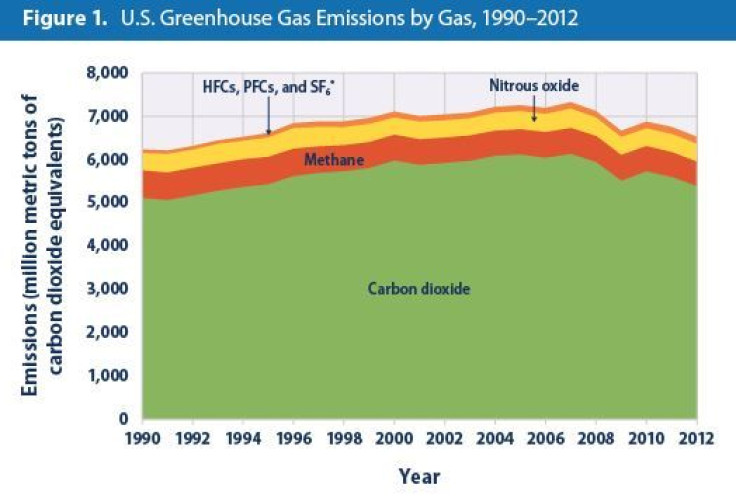Hidden Emissions In Meat, Released Into The Atmosphere, Calculated For The First Time

Eating meat pays a price beyond our wallets. Gases emitted from meat and livestock production have increased by 19 percent over the past 20 years, and our future can’t handle much more pressure. For the first time, a team of researchers from all over the world studied the gas emissions from meat and livestock throughout Poland, Germany, and the Netherlands, and published their findings in the journal Environmental Research Letters. They uncovered the hidden amounts of methane (CH4) and nitrous oxide (N2O) measured from beef, chicken, and pork.
"Our analysis of livestock emissions embodied in the international trade of meat highlights the regional variation in emissions intensities and quantifies a significant barrier to effective regional and national policies regulating livestock emissions,” the study’s lead author Dr. Dario Caro, from the Carnegie Institution for Science (Stanford) and the University of Siena, said in a press release. "A developing country, for example, may lack specific infrastructure and therefore emit large amounts of GHGs (greenhouse gases) when producing meat from livestock.”
Methane is released into the environment from the animal’s digestive system. Cows are literally releasing gas into the atmosphere as a result of their digestive system’s output, also known as farts. It mingles with the N2O gases that release from the cow’s manure, and they float up into the air and add to the layer of greenhouse gases blanketing the earth. Researchers calculated the amount of emissions each country produced in addition to how many emissions came from products they consumed. Russia was red flagged as the biggest importer of meat emissions. It also received a majority of its emissions from Brazil and Argentina.
“These emissions can be increased when demand from more developed countries is placed on this country to produce more meat,” Caro said. With a future promising more people and less resources looming over all of our heads, agriculture needs to change. Out of all the agricultural land used to grow crops in the world, 28 percent is wasted. As a direct result, the food wasted throughout the world produces 3.64 billion tons of greenhouse gases each year.

Previous studies have only measured out carbon dioxide (CO2) emission throughout the world’s product trade, most likely because it’s the most prevalent gas when it comes to climate change. It’s released by vehicles, industry, and forest removal among other things. But these researchers say there hasn’t been enough focus on the amount of CH4 and N2O that’s being emitted alongside every day. By cutting out a certain amount of meats per week, an overall gas reduction may be achieved within the decade.
"The developing world is getting better at reducing greenhouse emissions caused by each animal, but this improvement is not keeping up with the increasing demand for meat," Caro said. "As a result, greenhouse gas emissions from livestock keep going up and up in much of the developing world."
By breaking down each animal, researchers found cattle made up 74 percent of livestock greenhouse gas emissions and 54 percent of them came from beef cattle, while another 17 percent came from dairy cattle. Not only do we consume an enormous amount of beef, which is why the industry supplies the demand, but cows just give off more gas than any other livestock. Comparatively, sheep made up nine percent, buffalo seven percent, pigs five percent, and goats four percent.
"That tasty hamburger is the real culprit," Carnegie Institute Researcher Ken Caldeira said in a previous study earlier this year that tracked the global trends of greenhouse gas emissions from livestock. "It might be better for the environment if we all became vegetarians, but a lot of improvement could come from eating pork or chicken instead of beef.”
Source: Caro D, et al. CH4 and N2O Emissions Embodied in International Trade of Meat. Environmental Research Letters. 2014.



























